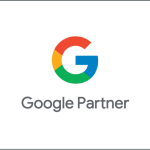Google Ads offers robust features that amplify your online advertising strategy. You can reach targeted audiences using precise demographic and interest-based segmentation. Cost-effective bidding strategies like Target CPA and Enhanced CPC ensure you get the best value for your investment. Analytics track essential metrics such as click-through rates and conversions in real time, enabling swift adjustments. Dynamic and Responsive Search Ads optimize ad relevance and performance. Use Keyword Planner for insightful keyword research and bid estimates. Ad Extensions like sitelinks and callouts enhance engagement. With these tools, you're set to run highly effective and strategic ad campaigns and discover more advanced techniques.
Targeted Audience Reach
How can you ensure your ads reach the most relevant audience?
By leveraging Google Ads' robust audience segmentation and demographic targeting features, you can strategically position your ads in front of those most likely to engage and convert.
Audience segmentation allows you to divide your potential customers into distinct groups based on specific criteria like behavior, interests, and purchase intent. This segmentation enables you to tailor your messaging to resonate deeply with each group's unique characteristics.
Demographic targeting takes this a step further by refining your audience based on age, gender, parental status, and household income.
For example, if you're promoting a high-end fashion brand, you might focus on higher-income individuals within a certain age range.
Google Ads' data-driven insights help you adjust these parameters, ensuring you're not wasting ad spend on segments less likely to convert.
Cost-Effective Bidding
Maximizing your ad's reach is vital, but ensuring cost-effective bidding strategies is equally important to optimize your return on investment. Google Ads offers several bidding strategies designed to align with your specific marketing goals.
Whether you aim for increased clicks, conversions, or impressions, selecting the right strategy is crucial. For instance, Target CPA (Cost Per Acquisition) focuses on getting the most conversions at your target cost, while Enhanced CPC (Cost Per Click) adjusts your manual bids for more conversions.
Delving into cost analysis, you can gain insights into which bidding strategies offer the best value for your budget. Tools like Google's Bid Simulator help you understand how different bids might impact your results, providing a data-driven foundation for your decisions.
Leveraging these tools allows you to make strategic adjustments and stay competitive without overspending.
Comprehensive Analytics
Utilizing Google Ads' comprehensive analytics tools, you can gain actionable insights into your campaign's performance, allowing for data-driven optimizations.
Conversion tracking is a pivotal feature that lets you measure the effectiveness of your ads by capturing actions like purchases, sign-ups, or calls. This granular data helps you understand which keywords, ads, and campaigns are driving the most valuable interactions, ensuring that your budget is allocated efficiently.
User engagement metrics are equally essential. By examining metrics such as click-through rates (CTR), bounce rates, and average session duration, you can gauge how well your ads are resonating with your audience. High engagement indicates that your messaging is aligned with what your audience is seeking, fostering a sense of connection and belonging.
Furthermore, the real-time analytics offered by Google Ads enable you to make timely adjustments. You can pause underperforming ads, increase bids on high-performing keywords, or refine your targeting strategy to better reach your desired audience.
These insights empower you to continuously improve your campaigns, ensuring sustained growth and success. With Google Ads' analytics, you're not just running ads; you're building a community of engaged, loyal customers.
Ad Customization
With Google Ads, you can leverage Dynamic Search Ads and Responsive Search Ads to boost your campaign's efficiency.
Dynamic Search Ads automatically match your ads to relevant searches, increasing reach by 15% on average.
Responsive Search Ads use machine learning to test various headlines and descriptions, improving ad performance by up to 10%.
Dynamic Search Ads
Dynamic Search Ads (DSAs) leverage Google's web crawling technology to automatically generate relevant ad headlines and landing pages based on your site's content, ensuring that your ads reach a broader audience with minimal effort. By utilizing dynamic content and automated targeting, DSAs identify gaps in your keyword-based campaigns, capturing traffic you may have otherwise missed. This automation not only saves you time but also increases your ad's relevance, leading to a higher click-through rate (CTR) and improved return on investment (ROI).
Google's ability to scan your website enables DSAs to match user searches with your most pertinent pages, delivering highly relevant ads that resonate with your audience. You don't need to manually create new ads for every product or service; instead, DSAs dynamically adapt to your site's updates. This ensures your advertising strategy stays current without constant oversight.
Moreover, DSAs offer strategic advantages by allowing you to focus on high-level campaign optimization. You can allocate resources to refining your broader marketing objectives while Google handles the granular details. This synergy between automated processes and strategic oversight empowers you to achieve a cohesive, efficient advertising strategy, fostering a sense of belonging within your target market.
Responsive Search Ads
How can you ensure your ads are as effective and personalized as possible? Responsive Search Ads (RSAs) are your answer. This ad format allows you to input multiple headlines and descriptions. Google Ads then dynamically tests different combinations to find the best-performing variant, ensuring your campaign optimization is top-notch.
Data shows that RSAs can increase your click-through rates by up to 15%, making them a powerful tool in your advertising arsenal. By leveraging machine learning, RSAs tailor your messages to match user searches, enhancing relevance and engagement. When users see ads that speak directly to their needs, they're more likely to click, driving conversions and fostering a sense of belonging within your target audience.
Strategically, RSAs free up your time and resources. Instead of manually tweaking ads, you can focus on broader marketing strategies while Google fine-tunes your ad performance. To maximize effectiveness, provide diverse headlines and descriptions that highlight different value propositions. This variety ensures that your ads resonate across various segments of your audience.
Incorporating Responsive Search Ads into your Google Ads strategy isn't just about automation; it's about smarter, data-driven campaign optimization that delivers personalized experiences at scale.
Keyword Planner
With Google's Keyword Planner, you can strategically find relevant keywords that align with your business goals.
It provides data-driven insights to help you estimate keyword performance, ensuring you target terms with high search volume and low competition.
This tool is crucial for optimizing your ad spend and maximizing ROI.
Finding Relevant Keywords
Leveraging Google's Keyword Planner allows you to identify high-value keywords that can significantly enhance your ad campaign's reach and effectiveness.
When you dive into keyword research, you'll uncover insights into what potential customers are searching for and how to align your ads with their search intent. This tool provides data on keyword volume, competition, and trends, enabling you to make informed decisions.
By focusing on relevant keywords, you ensure your ads appear in front of the right audience at the right time. The Keyword Planner helps you discover new keyword opportunities you might've missed, making your campaigns more comprehensive and targeted. For instance, understanding the keywords your competitors are bidding on can offer a competitive edge.
Additionally, the tool aids in identifying negative keywords, which can prevent your ads from showing up in irrelevant searches. This not only saves you money but also optimizes your ad spend for better ROI.
Estimating Keyword Performance
Using the Keyword Planner, you can estimate keyword performance by analyzing metrics like search volume, competition, and cost-per-click to strategically optimize your ad campaigns. This tool helps you gauge the potential of your chosen keywords, ensuring you invest in those that can drive the most traffic and conversions.
Start with keyword competition analysis to identify how many advertisers are bidding on a specific keyword. High competition indicates a crowded market, whereas low competition might offer a cost-effective opportunity. Pair this with search volume data to understand how frequently users search for these terms. High search volume suggests a broader audience but often comes with higher competition and costs.
Search intent evaluation is crucial for aligning your keywords with user needs. By examining the context in which keywords are used, you can select those that match your audience's intent, whether they're looking to buy, learn, or find information. This alignment boosts relevance and improves ad performance.
Ad Extensions
Ad extensions in Google Ads provide significant opportunities to enhance your ad's visibility and click-through rate by including additional information. With various ad extension types available, you can strategically choose the ones that align best with your goals and audience.
Here are the primary ad extension types you should consider:
- Sitelink Extensions: Direct users to specific pages on your website, like contact forms or product categories, boosting engagement.
- Callout Extensions: Highlight key offers or features, such as 'Free Shipping' or '24/7 Customer Support,' making your ad more compelling.
- Structured Snippet Extensions: Provide a preview of your products or services, showcasing specific aspects like 'Destinations' or 'Styles.'
- Call Extensions: Allow users to call your business directly from the ad, increasing the likelihood of immediate conversions.
To maximize the impact of ad extensions, follow these best practices:
- Relevance: Ensure each extension is highly relevant to your ad content and target audience.
- Quality: Maintain high-quality information in extensions to build trust and credibility.
- Performance Monitoring: Regularly review the performance of your extensions to identify and replicate successful strategies.
Performance Tracking
Performance tracking in Google Ads enables you to gain actionable insights into your campaign's effectiveness by analyzing key metrics and data trends. By leveraging conversion tracking, you can pinpoint which ads, keywords, and landing pages drive the most valuable actions, such as purchases or sign-ups. This data empowers you to allocate your budget more efficiently, ensuring that your investment yields maximum returns.
To achieve optimal results, you should regularly review performance metrics like click-through rates (CTR), cost per conversion, and return on ad spend (ROAS). These indicators help you identify areas for campaign optimization, allowing you to make data-backed adjustments that improve overall performance.
For example, if a particular ad group shows a high CTR but low conversions, you might need to refine your ad copy or target audience.
Conclusion
By leveraging Google Ads' key features—targeted audience reach, cost-effective bidding, comprehensive analytics, ad customization, keyword planner, ad extensions, and performance tracking—you'll maximize your advertising ROI.
These tools offer strategic insights and actionable data, ensuring your campaigns are both efficient and effective.
Don't miss out on the opportunity to refine your approach and achieve measurable growth.
Embrace these features to drive better results and stay ahead in the competitive landscape.














